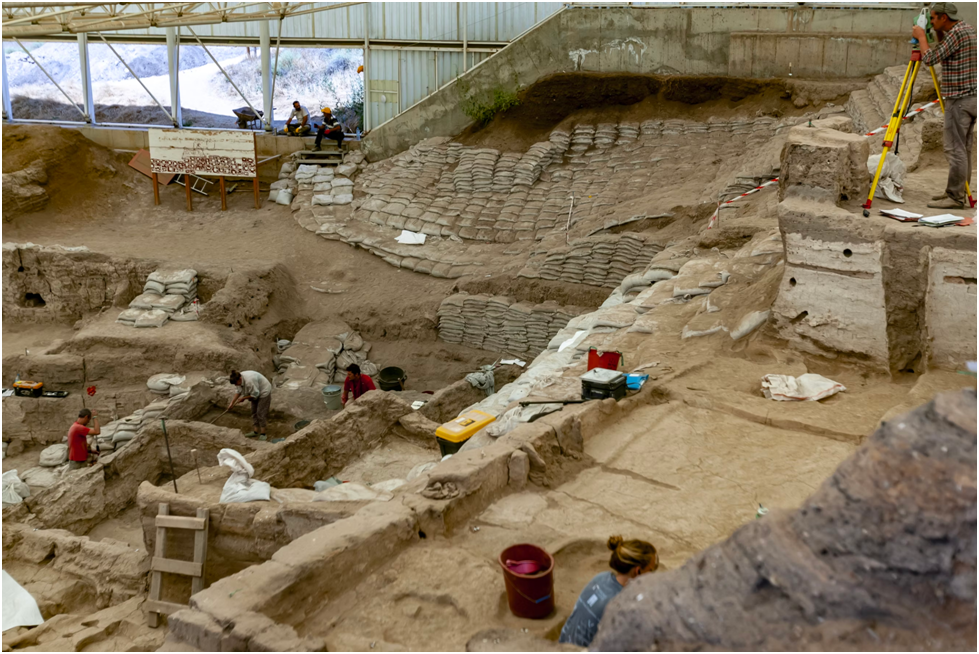In the world of archaeology, a remarkable transformation has occurred with the advent of metal detectors. These unassuming devices have proven invaluable tools, revolutionizing how we explore our ancient past. This article delves into the fascinating journey of metal detectors in archaeology, from their humble beginnings to their current state-of-the-art capabilities.
Archaeology has always been a quest to uncover the secrets of our ancestors. It’s a discipline that relies on meticulous excavation, careful analysis, and a touch of serendipity. In this pursuit, the role of technology cannot be overstated, and metal detectors have emerged as game-changers.
Historical Perspective
To appreciate the significance of metal detectors in archaeology, we must first travel back in time. Early pioneers in archaeology had no metal detectors at their disposal. Instead, they relied on intuition and manual excavation methods. It wasn’t until the mid-20th century that the potential of metal detectors began to be recognized.
The early models of metal detectors were rudimentary, with limited accuracy. Archaeologists like Eric H. Cline recount tales of using surplus military mine detectors in the 1960s, a far cry from today’s specialized equipment. However, even these primitive detectors yielded promising results, inspiring further development.
Modern Metal Detectors
Fast forward to the present day, and we find archaeologists equipped with an impressive array of metal detectors designed explicitly for their needs. These modern devices are far from their predecessors, boasting features such as adjustable sensitivity, discrimination modes, and pinpoint capabilities.
Today’s metal detectors are finely tuned instruments capable of distinguishing between various types of metals. They offer archaeologists the ability to precisely target specific materials, ensuring that valuable artifacts are not overlooked during excavations.
Applications in Archaeology
Metal detectors have found their niche in archaeological excavations. Their role is multi-faceted and essential to the success of many projects. Let’s explore some of the key applications of metal detectors in archaeology.
Targeted Surveying
One of the primary uses of metal detectors in archaeology is targeted surveying. Archaeologists employ these devices to scan an area systematically, identifying buried metal objects beneath the Earth’s surface. This helps in mapping out potential dig sites and pinpointing areas of interest.
Artifact Discovery
The most exciting application is the discovery of artifacts. From ancient coins and intricate jewelry to millennia-old weapons and tools, metal detectors have been instrumental in locating objects that provide crucial insights into bygone eras. These finds add pieces to the intricate puzzle of our history.
Enhancing Accuracy
In addition to artifact discovery, metal detectors enhance the accuracy of archaeological surveys. Archaeologists can focus their efforts more effectively by narrowing down areas with a high likelihood of significant discoveries. This saves time and resources and increases the chances of uncovering historically significant finds.
Benefits of Metal Detection in Archaeology
The benefits of using metal detectors in archaeology are manifold. They go beyond mere convenience and efficiency and extend into the preservation of historical artifacts and the overall enrichment of archaeological knowledge.
Artifact Preservation
A critical advantage is the preservation of historical artifacts. Metal detectors allow for the precise location of buried objects, preventing accidental damage during excavation. This preservation ensures that artifacts remain intact and can be studied in their original context, contributing to a more comprehensive understanding of history.
Accuracy and Efficiency
The increased accuracy and efficiency brought about by metal detectors are undeniable. By reducing the guesswork involved in excavation, these devices enable archaeologists to make the most of their resources. Every dig becomes a purposeful endeavor, maximizing the chances of unearthing treasures from the past.
Challenges Faced
However, like any technological advancement, using metal detectors in archaeology has its share of challenges.
Balancing Technology and Tradition
One significant challenge is balancing technological assistance and preserving historical context. Overreliance on metal detectors could lead to neglecting non-metallic artifacts, risking the loss of crucial information about ancient cultures.
Ethical Considerations
As we celebrate the contributions of metal detectors to archaeology, it’s crucial to address ethical considerations.
Responsible Metal Detecting
Unauthorized metal detecting can lead to the looting of historical sites, resulting in the loss of priceless heritage and scientific data. To protect our shared cultural legacy, responsible metal detecting practices are essential. This includes obtaining the necessary permits and collaborating with professional archaeologists.
Future Prospects
Looking to the future, the prospects for metal detectors in archaeology appear promising. Advancements in technology are likely to result in even more sophisticated devices with improved accuracy and capabilities. These tools will continue to aid archaeologists in their quest to uncover hidden treasures and piece together the stories of ancient civilizations.
In the grand tapestry of archaeology, metal detectors have woven a thread of innovation and revelation. From their humble origins to their current state-of-the-art sophistication, these unassuming devices have altered the course of historical exploration. They have become our trusty companions in the quest to unearth hidden treasures and decode the enigmas of bygone eras.
As we celebrate the indispensable role of metal detectors in archaeology, it’s essential to acknowledge the contributions of products like Nokta Metal Detectors and Accessories. Nokta Detection Technologies Dedication to advancing detection technology has been instrumental in empowering archaeologists & hobbyists worldwide.




